Annual Reporting: (2013) Other Elsewheres
Throughout 2013 I rarely spent more than a couple of months in one place, as I hopped around on a semi-intentional loop between DC, Wisconsin, and North Carolina — where I had formal and semi-formal residencies — and New York City, California, and the United Kingdom, where I had good friends and new professional contacts. These trips were partially funded by travel stipends for conferences, and other speaking engagements or consulting gigs; otherwise just squeaked through hella cheap and on the good graces of lovely hosts. Here’s a recap of (most of) what I saw. i
California
Over the course of several trips back back to Cali Cali, I visited timebanks in Los Angeles (including Arroyo S.E.C.O, and the California Federation of Time Banks) and learned about their pilot experiments in micro-financing member’s projects. In Lake County, I met with Terry Daniels of hOurworld and stayed with Carol Cole-Lewis of Thrive Lake County, which is growing through the formative stages of a kind of organizing I’ve dreamt of: supporting the development of local cooperatives through co-production fostered by their local timebank. In the San Francisco Bay Area, I sat in on meetings with the Bay Area Community Exchange, and heard about their members’ work on projects like a youth-run bicycle repair shop.
I met folks at the Sudo Room in Oakland — a rad example of a hackerspace engaged in the theory and action of digital justice, as they building community wireless networks and hosting educational programs intentionally designed to welcome participation from those not normally seen in Silicon Valley boardrooms. Also in Oakland, I had the good fortune to walk right into an Ivan Illich seminar, sit just a row away from Governor Jerry Brown (who was once a disciple of Illich’s), and strike up a great conversation with commons scholar, David Bollier.ii
In Bolinas, I dined with the team at Yerdle, and learned about their plans for a mutual credit system designed around the useful exchange of stuff.
And I spent a lot of time with Code for America, at their office and at their summit and with people in their network; during an extended residency at my buddy Blaise’s place in the Mission, I wrote this essay for publication in Code for America’s book, Beyond Transparency.
New York City
Over a couple of trips to NYC, I was thrilled to learn about the largest timebank in the U.S., hosted by the Visiting Nurse Service of New York. This billion dollar healthcare institution funds more than ten timebank organizers — one of the most truly diverse and representative community organizing shops I’ve ever seen — and it does so because they’ve demonstrated that when people are actively involved with their neighbors, their health improves and they spend less time in the hospital. At the VNS office in Chinatown, I talked with timebank organizers about how they tweaked the traditional timebanking model to be more culturally appropriate for the Chinese community — and I stuck around for some origami lessons from the participating folks in the room.
Elsewhere, in Brooklyn, I visited the Red Hook Initiative and learned about their community wireless network and local mapping application, Tidepools. In the wake of Superstorm Sandy, Red Hook was kind of like New York City’s own lower 9th ward — flooded in the storm and subsequently cut off from the rest of the city. The Red Hook Initiative was a locus of response and recovery in a community that was more or less left to fend for itself by the powers that be; their wireless network became a key communications hub during the aftermath. I also met up with Devin Balkind, who had worked with the Occupy Sandy effort and is now developing — through NYC Prepared — a long-term strategy for ‘free, libre, and open source’ software to support community-level emergency preparedness and crisis response.
The United Kingdom
I had some great luck to connect with a few of the leading practitioners of co-production in the U.K., where the concept has gained so much traction in practice and policy over the past decade that it seems to even have become an over-hyped buzzword. Past the hype, however, a lot of impressive results are clearly evident. In the course of a few visits to Holy Cross Centre Trust in London, I observed the fascinating blur of lines between patron, volunteer, and staff: meals were cooked and dishes done by patrons, the “volunteers” were earning credit toward professional certification, and the staff was regularly taking direction from their clients as to what kinds of activities should happen where, when, and how. What once was a contentious relationship between a program for indigent people (many of whom are refugees; many others are people with mental illness) and the surrounding community seems to have become a center of creativity and dialogue. From Philippe Granger, I learned about his long history of work with the Rushey Green Time Bank, and the growth of well over a hundred similar programs based in medical clinics across Britain; together, Philippe and I broke bread and compared notes with more than a dozen coordinators from a dispersed network of local time banks throughout London.
I also visited Wales, and was graciously hosted by Dawn Davies and her family in Pontycymmer, a small town in the valleys that has been struggling out from under an economy that collapsed with the coal mines back in the 80s. Dawn runs an organization called the Creation Group, which operates the Blaengarw Time Centre in the town’s central commons, the old union hall. Creation has developed a printed scrip currency that is earned through participation in various local activities, and redeemable for discounts at the local restaurant, access to computer terminals, attendance at cultural events, and even for course credit at the nearby university in Cardiff. For the first time in over a generation, Blaengarw’s population is growing.
At the University of Bristol, I learned about a major research initiative in which academics are forming their guiding questions through a co-produced process in which the study’s subjects themselves (community leaders and local organizations engaged in coproduction) help establish the focus and terms of study. Thanks to David Boyle, Lee Gregory of Birmingham University, Geoff Thomas of Timebanking Wales, Noemi Lendvai and Morag McDermont of the University of Bristol, and Alison Powell at the London School of Economics for enlightening discussions and helpful guidance.
An ongoing journey
This was how my year was spent: bouncing around, seeking glimmers of light from sources of cooperation and common trust. I also traveled to Berlin and Barcelona, where I learned about massive, distributed community wireless networks there.iii I visited Chicago to hear from projects placing “cyber-navigators” on hand in every public library to help people access information on the web, and wiki-stewards aggregating local knowledge and history on LocalWikis.
I went to Delaware once, too.iv
I was often amazed at how easy it was to find the next destination, another group of people creating new ways (and reclaiming old ways) of working together, cultivating shared values, and in so doing, building resilient communities. At times, it seemed almost like I was uncovering some kind of path across a karmic plan; but the more sensible explanation is that new, liberating possibilities are bubbling up all around us, and if you know to look, you can find bubbles everywhere.
My year ended in Miami, where I grew up and to whence I now returned, exhausted of unemployment benefits and travel stipends, with holes in all of my socks and busted plugs at the end of most of my charging cables. I was soon happily surprised to find here, too — in a place not particularly known for its civic health — various cooperative endeavors and eager curiosity among community leaders who are exploring the possibilities of community-owned data, cooperative development, hackathons, etc. Perhaps what started as a hibernating retreat at home will turn into a residency of its own in the new year…
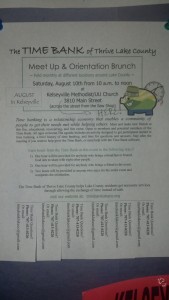
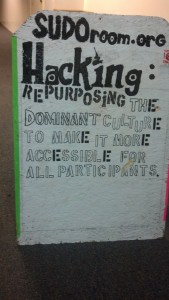
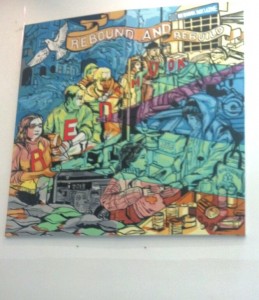
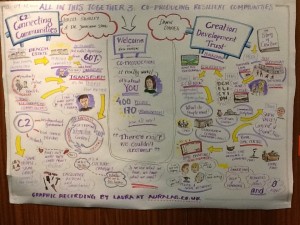
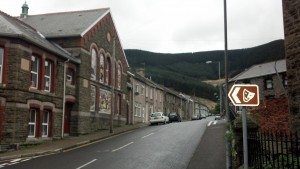
Pingback: Annual Reporting: Two Years of Useful Unemployment | gregbloom.org